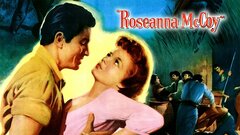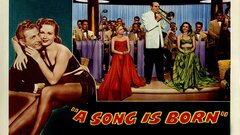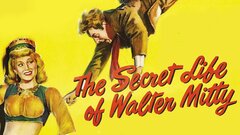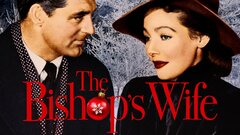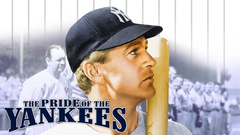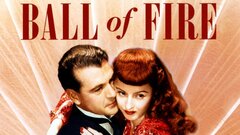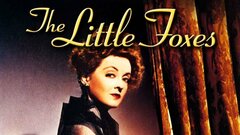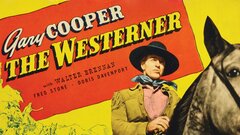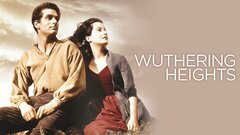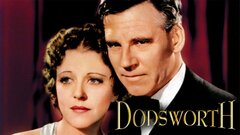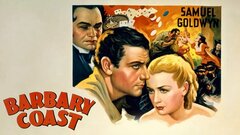A pioneer in the American independent film industry, Samuel Goldwyn emerged from the founding of both Paramount Pictures and Metro-Goldwyn-Mayer to establish his own company, Samuel Goldwyn Pictures, which produced such memorable movies as "Wuthering Heights" (1939), "The Little Foxes" (1941), "The Secret Life of Walter Mitty" (1946) and the Oscar-winning "The Best Years of Our Lives" (1946). A Polish immigrant who pulled himself out of poverty through skilled salesmanship and the occasional use of blunt negotiating force, Goldwyn's emphasis was bringing the best in movie entertainment to audiences. The result was a dedication to quality and talent that made him a major figure in mid-20th-century Hollywood, and a groundbreaker for a generation of independent producers that followed in his wake.
Named either Shmuel or Schmuel Gelbfisz in Warsaw, Poland on an unspecified date in July of 1879, he was the first of six children by his parents, a used furniture dealer and his wife. At the age of 16, he left his family and crossed Europe on foot, eventually making his way to Birmingham, England, where relatives gave him an Anglicized name, Samuel Goldfish, in order to help him assimilate into an English-language culture. In 1898, he acquired enough money to make the voyage across the Atlantic to America, arriving first in Nova Scotia before settling in Gloversville, NY in January 1899. There, the 19-year-old found work as a floor sweeper at a glove factory.
Goldwyn soon discovered that he had a talent for sales and marketing, and within three years' time, he was the top garment salesman in Gloverville. Eventually, he became a partner in the company and moved its base of operations to Manhattan, where he married Blanche Lasky, sister of vaudeville performer Jesse L. Lasky.
In 1913, he convinced Lasky and a Broadway stage actor and director named Cecil B. DeMille to join forces and start their own motion picture company. The Jesse L. Lasky Feature Play Company's first project was an adaptation of the play "The Squaw Man" (1914), which was notable as both the beginning of DeMille's directorial career and the first feature film shot in Hollywood a small town within Los Angeles. That same year, a film exhibition company called Paramount contracted the Lasky Company to provide feature films for distribution. Another distributor, Adolph Zukor's Famous Players Film Company, was brought into the fold and eventually merged with the Lasky Company to form The Famous Players-Lasky Company in 1916. Zukor became president of both Paramount and Famous Players-Lasky, with Goldwyn taking the vice-presidential seat.
Clashes between the two future moguls led to Goldwyn abandoning his role at the company, though he retained stock and his chair on the board of directors. The dissolution of his marriage to Blanche Lasky also distanced him from the Lasky Company, which eventually foundered in 1933.
Goldwyn then established a new company, the Goldwyn Pictures Corporation, with Broadway producers Edgar and Archibald Selwyn, and took the company's moniker for his own surname. The company boasted one of the most lavish production facilities in Hollywood, and its logo, Leo the Lion, became one of the most identifiable trademarks in the world, but it proved only moderately successful. By 1922, Goldwyn had been forced out of the company by the Selwyns, who then merged with Marcus Loew's Metro Pictures and Louis B Mayer Productions to form what would become Metro-Goldwyn-Mayer. His only association with the company was the shared name, which the Selwyns retained.
The back-to-back ousters underscored the fundamental reasons why Goldwyn would find greater success as an independent than within the studio system. He had a volatile temper, would pursue legal action against opponents long after it was feasible to do so, and could be astonishingly cheap and petty in his financial dealings with his artists. He was also hampered by his limited English skills and education, which produced a string of curious turns of phrase that became known as "Goldwynisms."
Among the more famous was "Gentlemen, include me out;" "Give me a smart idiot over a stupid genius any day" and "An oral contract isn't worth the paper it's printed on." Such idiosyncrasies were better suited for a man in charge of his own company, rather than a team member, and Goldwyn followed that lead shortly after being ousted by the Selwyns.
Goldwyn formed Samuel Goldwyn Productions in 1923, and opened its studio and offices on the Pickford-Fairbanks Studios Lot in West Hollywood. The company's philosophy flew directly in the face of accepted industry wisdom: he would make just one picture at a time, rather than churn them out in assembly-line fashion, and he would devote as much money and energy as possible to the production by bringing in the best talent in front of and behind the camera.
A casual list of talent that worked with Goldwyn over the course of his four-decade career as a producer includes some of the most enduring names in film history, including actors Laurence Olivier, Gary Cooper, Eddie Cantor, Will Rogers and Danny Kaye; directors like William Wyler, John Ford, King Vidor, Howard Hawks and Otto Preminger; and writers like George S. Kaufman, Ben Hecht, Billy Wilder and I.A.L. Diamond, Lillian Hellman, Dorothy Parker, Thornton Wilder, Nunnally Johnson and Edna Ferber.
Goldwyn Pictures began to blossom with the advent of talking pictures. 1929's "Bulldog Drummond" began the company's string of successes, and by 1931, he had received the first of numerous Best Picture Oscar nominations for Ford's "Arrowsmith" (1931). His emphasis on high-quality entertainment over box office trends allowed him to tackle all genres, from the broad musical comedies of Eddie Cantor like "The Kid from Spain" (1932) and "Roman Scandals" (1933) to dramas like "These Three" (1936), a bowdlerized version of Hellman's "The Children's Hour" with all references to lesbianism removed, or "Dodsworth" (1936), based on the Sinclair Lewis novel.
Hard-hitting social dramas like "Dead End" (1937) followed literary adaptations like "Wuthering Heights" (1939) with Olivier and Merle Oberon, and "The Little Foxes" (1941), with Bette Davis, all of which earned Best Picture Oscar nods. But there were also countless musicals on the production slate, and biographical films, like the much loved "Pride of the Yankees" (1941), with Gary Cooper as Lou Gehrig. In the mid-'40s, Goldwyn found great success with a string of comedies featuring Danny Kaye, including "Wonder Man" (1945), "The Kid from Brooklyn" (1946) and "The Secret Life of Walter Mitty" (1946).
The apex of Goldwyn's career was "The Best Years of Our Lives" (1946), a moving drama about three veterans struggling to adjust to civilian life. The film won eight Academy Awards, including Best Picture, Best Director (William Wyler), Best Actor (Frederic March) and Best Supporting Actor, as well as an honorary award for non-professional Harold Russell, a real-life veteran who had lost both hands during training. Goldwyn himself was given the Irving G. Thalberg Memorial Award at the same ceremony, which marked both the highest achievement of his film career, as well as the launch of a slow, inexorable decline that would precede his retirement in just over a decade.
Goldwyn's stellar track record became tarnished in the late '40s and early 1950s. For every hit, like "The Bishop's Wife" (1947), with Cary Grant and Loretta Young, or his film version of "Guys and Dolls" (1955) with Frank Sinatra and Marlon Brando, there were costly failures, like "The Elusive Pimpernel" (1950). His brand of all-American dramas were also turning passé; audiences who had flocked to melodramas like "The Best Years of Our Lives" in the past were less than enthusiastic about "Our Very Own" (1950) and "I Want You" (1951) with Susan Hayward.
The coup de grace for Goldwyn was the film version of George and Ira Gershwin's "Porgy and Bess" (1959), which suffered from numerous production setbacks, not the least of which was a fire that destroyed its sets. Despite a cast that included Sidney Poitier, Dorothy Dandridge and Sammy Davis, Jr., the film was a costly flop and a critical failure. To make matters worse, it earned the ire of the Gershwin estate, which withdrew it from circulation in the late 1960s. Soon afterwards, Goldwyn retired from the film business, bringing an end to the most successful independent film career in motion picture history.
In the years that followed, Goldwyn's roster enjoyed numerous and lucrative theatrical and television screenings. His status as one of the industry's most talented producers earned him the Jean Hersholt Humanitarian Award in 1957 and the Presidential Medal of Freedom in 1971. Three years later, Goldwyn died of natural causes at what most sources credited as the age of 94. His son, Samuel Goldwyn, Jr., from his second marriage to actress Frances Howard, carried on in his father's tradition by launching The Samuel Goldwyn Company, which distributed and produced independent features and preserved the rights to his father's films, and later became Samuel Goldwyn Films. Goldwyn's grandchildren also took up the trade, including actor-director Tony Goldwyn and John Goldwyn, who brought the family name full circle by becoming President of Motion Pictures at Paramount in 1991.











